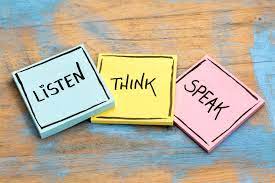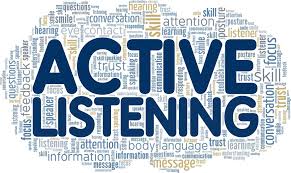Mastering the Art of Active Listening for Deeper Connections
In our fast-paced digital age, where multitasking is the norm and conversations often skim the surface, mastering the art of active listening can significantly deepen and enrich your interpersonal relationships. Active listening is not merely a skill but a gateway to understanding, empathy, and genuine human connection, making it indispensable both personally and professionally. It allows us to fully engage in the moment, offering our full attention to the speaker, which is a powerful affirmation of their value in our lives.
Understanding the Essence of Active Listening
Active listening transcends the simple act of hearing words spoken. It involves fully engaging with the speaker, interpreting their message, and responding thoughtfully. This comprehensive engagement requires attentiveness to both verbal and nonverbal cues, such as tone of voice, facial expressions, and body language, which often convey more than words alone. It’s about creating a space where the speaker feels truly heard and understood, which can significantly enhance the quality of interactions.
Why Active Listening Is Crucial
Active listening serves as the backbone of effective communication. It facilitates:

- Deeper Emotional Connections: By attentively listening, you validate the speaker's feelings and perspective, fostering a sense of worth and trust.
- Enhanced Problem Solving: Clear understanding can lead to more effective solutions, especially in conflict situations where emotions might otherwise cloud judgment.
- Improved Decision Making: In professional settings, understanding all viewpoints enhances your ability to make informed decisions.
The Transformative Power of Active Listening
Embracing active listening can fundamentally transform your interactions and relationships, making them more meaningful and productive. This skill is crucial not just in resolving conflicts but also in building stronger connections—whether in personal relationships, professional environments, or casual encounters.
In professional settings, active listening has shown to improve team dynamics significantly. By truly understanding each team member’s ideas and concerns, leaders can foster a more inclusive and collaborative atmosphere. For example, in meetings, when leaders actively listen, they not only gather more diverse insights but also empower contributors, boosting morale and engagement.
In personal relationships, active listening can deepen emotional connections. It allows individuals to express themselves fully and feel genuinely understood. This mutual understanding helps in resolving disputes with compassion, and strengthens the bonds of trust and respect between individuals.
Moreover, active listening enhances one’s ability to navigate through daily communications more effectively. It helps in accurately capturing the nuances of conversations, which can be pivotal in making informed decisions and avoiding misunderstandings.
By integrating active listening into your communication practices, you can experience a remarkable improvement in how you relate with others and how effectively you can collaborate and resolve issues. This proactive approach to communication invites a level of depth and sincerity that enriches every interaction.
Advanced Strategies for Effective Active Listening
While the basics of active listening are straightforward, mastering it requires practice and mindfulness. Here are advanced techniques to elevate your listening skills:
- Empathetic Mirroring: Reflect the emotions you perceive in the speaker to show understanding and empathy.
- Clarifying Questions: Ask open-ended questions that encourage deeper exploration of the topic.
- Summarizing and Synthesizing: Periodically summarize what's been said to confirm understanding and weave connections between points discussed.

Challenges and Overcoming Them
Active listening can be challenging due to inherent biases and preconceived notions. Overcome these barriers by:

- Practicing mindfulness to stay present.
- Actively setting aside judgments during conversations.
- Focus on understanding, not responding.
- Engaging in regular reflective practice to enhance your listening skills.
Real-World Application and Impact
Active listening has transformative effects across various scenarios, highlighting its value in personal and professional contexts. Consider these detailed instances where active listening has made a significant difference:
- Corporate Negotiations
- Scenario: During a critical negotiation between two companies facing a merger, tensions were high, with both sides having significant reservations.
- Application: The facilitator employed active listening techniques, ensuring that each party's concerns were acknowledged and understood. By summarizing key points and asking clarifying questions, the facilitator helped both parties see the underlying concerns of the other.
- Outcome: This approach not only smoothed the negotiation process but also helped forge a partnership that was beneficial for both companies, with a merger strategy that addressed the concerns of all stakeholders.
- Educational Settings
- Scenario: A university professor faced challenges with a disengaged class that was not participating actively in lessons.
- Application: By implementing active listening in the classroom, the teacher began to encourage students to express their thoughts on the subject matter and actively listened to their responses, providing feedback that validated their contributions.
- Outcome: Student engagement increased markedly. The students felt respected and valued, which encouraged them to participate more and fostered a positive learning environment.
- Personal Relationships
- Scenario: A couple experienced communication breakdowns, often resulting in misunderstandings and resentment.
- Application: Through couple’s therapy focusing on active listening, both partners learned to listen empathetically to each other’s needs and concerns without interrupting or planning responses.
- Outcome: This led to improved communication, a deeper emotional connection, and a significant reduction in conflicts. The couple reported greater satisfaction in their relationship and a renewed sense of partnership.
Each of these examples illustrates how active listening can lead to better outcomes by fostering understanding, resolving conflicts, and building stronger, more positive relationships. By applying active listening techniques, individuals and organizations can achieve more harmonious interactions and more effective communication.
Conclusion
Active listening is more than a skill—it's a commitment to understanding and valuing others' perspectives. It requires patience, openness, and a genuine desire to engage with others on a deeper level. By integrating active listening into your daily interactions, you not only improve your communication skills but also build lasting, meaningful relationships. It fosters a culture of respect and understanding that can profoundly impact all areas of your life.

Call to Action
Elevate your communication skills and transform your professional and personal relationships with our Active Listening Guide. Download it now and start your journey toward becoming a more attentive and effective communicator. Embrace the nuances of every conversation and see the difference it makes.